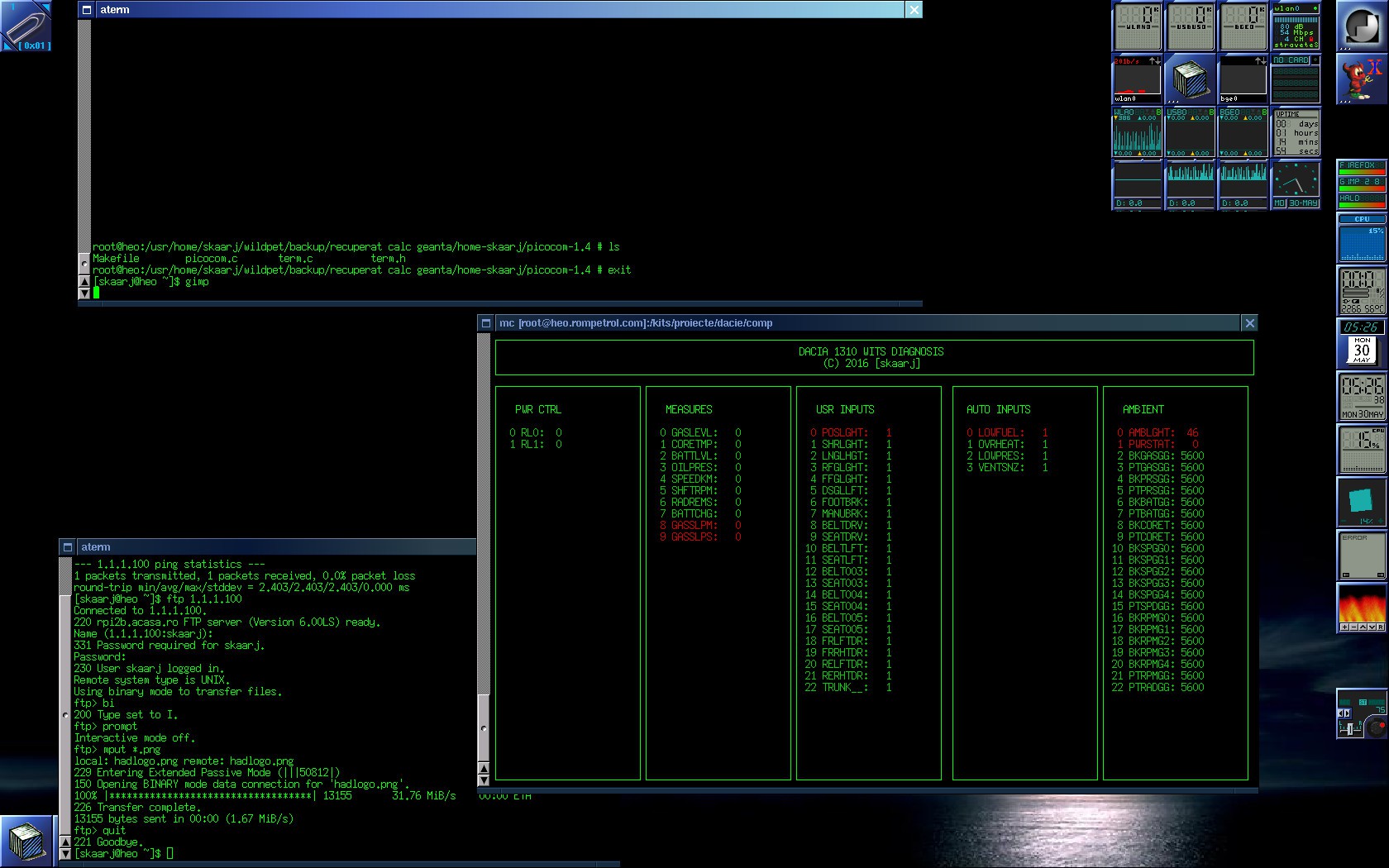Allright.
We have an Arduino, a tiny cute terminal, the RasPI, some wireless gasoline level sensors and finally some other sensors interfaced with the ex-insane electrical installation.
Server side (raspi) connects to the Arduino via serial port and reads a bunch of data which is later processed and displayed on the screen.
The WITS-style data is processed such as on each column, only that measurement category will be displayed.
An automobile diagram will be displayed on the screen. For now just in console mode, there is no way I can install anything graphic soon. FreeBSD is very avaricious regarding packages for newer core architectures. No image viewer - so no display support for HaD logo yet.
Server side software is based on picocom v1.4 serial port manipulation program.
Arduino software is entirely original.
There may be some comments written in Romanian. For whoever knows Spanish and a little Latin, there are no problems in understanding.
The code is uploaded to the Files section.
To compile, just issue "gmake" after decompressing. For Linux - replace the port name entry (/dev/...). The arduino sketch is also in that archive.
In the mean time I'm trying to capture screen on a platform without that possibility....

Screenshot with CANBUS/WITS diagnosis screen.
Operating System: Unix FreeBSD 11.0-ALPHA (RasPi side) and Unix FreeBSD 9.0/amd64 (laptop side, where I took the screenshot. No Linux. I work in petroleum industry at well drilling sites and there we use only BSD systems for industrial automation and control. Those monsters need to work without any BSOD or kernel panics due to dust, flies, mud or hot days in the Sahara Desert. No funny jokes such as Linux or M*******t are allowed, so I am sorry if I disappoint you people - from the industrial automation point of view I do not trust any kind of Linux. However the software should compile on Linux without any error.
At this time just ambient lights data is coming because the unit is now inside the house - to get a proper screenshot using a normal computer.
Some hints about the next log - Artifficial Intelligence at work - acquiring training data using flat tires and damaged bearings. So I need to buy damaged hardware, install it, and pay some dude to assist me in order to do the following operations:
- install bad bearings;
- install bad bushings, malfunctioned pivots;
- install worn axles and worn steering rods;
- build some device in order to flat the tire while driving
All of these to record the precious training data.
The experiment will test the capabilities of the my Artifficial Neural Network-based mechanical faults diagnosis project I covered in one of the early logs, to see how well it performs in recognizing such bad situations. That one needs to be rebuilt too because the motherboard was made by hand.
At this time the stage is almost ready for Citizen Scientist round - when I start experiments I need the equipments to be installed and in working states.
The next log will probably come in around 2....3 weeks.
[END OF TRANSMISSION]
______________________________________
kernel panic: improbability coefficient below zero
 [skaarj]
[skaarj]
Discussions
Become a Hackaday.io Member
Create an account to leave a comment. Already have an account? Log In.
I like what you're doing here, and I'm not being sarcastic. A screw would flatten a tire while driving, and plug kits are cheap and easy. Or a gun, if you want a blowout.
Are you sure? yes | no
Thank you.
I prepared some nails and a piece of wood, the device is ready.
I just can't find someone with enough balls to throw that in front of the car while I'm driving it with 60 miles per hour (100km/h). TWICE. One time for neural network training, next time to test if ANN recognizes the problem.
If this works, it can be extended to other mechanical malfunctions.
No need for guns. They are dangerous for children.
Are you sure? yes | no